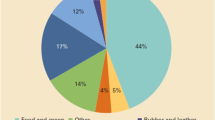Abstract
The oil and gas industry is variably classified in upstream sector and downstream sector, with both sectors having exposure to a good number of hazards. The crude oil extraction process is one of the prime objectives of the upstream sector which includes the exploration of the crude, subsequent drilling operation and maximum recovery of the crude oil and gas from the site of operation. The uncontrolled flow of hydrocarbon in well may lead to blowout and will probably have environmental impact; thus, the extraction process can have a huge impact on the elements of earth, which include the soil (area of exploration and production), water and air. Approximately on global scale, there are forty-thousand crude oil sites and millions of people work or live in nearby vicinity; and workers associated with the job will be largely influenced in regard of their safety and health. On comparison of O & G extraction industry with the construction industry, the fatality rate goes up by 2.5 times (Goldberg and Moye in the first hundred years of the Bureau of Labor Statistics. US Department of Labor, 1985), as exposure to hazards like noise, radiation, H2S, crystalline silica is significant. In the article further, we review the safety hazards and health hazards associated with the extraction of the crude along with assessing the probable causes of the fatal incidents and exposure to hazardous substances. Workers involved in crude extraction process have potential impact on their health such as loss of immunity, cancerous cell development, liver and respiratory tract damage and neurological disorders.

Similar content being viewed by others
References
J.P. Goldberg, W.T. Moye, The first hundred years of the Bureau of Labor Statistics. US Department of Labor (1985)
R.W. Bentley, Global oil and gas depletion: an overview. Energy Policy 30(3), 189–205 (2002)
C. O’Callaghan-Gordo, M. Orta-Martínez, M. Kogevinas, Health effects of non-occupational exposure to oil extraction. Environ. Health 15(1), 56 (2016)
J.E. Johnston, E. Lim, H. Roh, Impact of upstream oil extraction and environmental public health: a review of the evidence. Sci. Total Environ. 657, 187–199 (2019)
D. Mohammadnazar, A. Samimi, Nessacities of studying HSE management position and role in iran oil industry. J. Chem. Rev. 1(4), 252–259 (2019)
M.M. Asad, et al. Oil and gas disasters and industrial hazards associated with drilling operation: an extensive literature review. in 2019 2nd International Conference on Computing, Mathematics and Engineering Technologies (iCoMET). 2019. IEEE
C.F.D. Control, Prevention, Fatalities among oil and gas extraction workers–United States, 2003–2006. MMWR Morb. Mortal. Weekly Rep. 57(16), 429–431 (2008)
K.L. Mason et al., Occupational fatalities during the oil and gas boom—United States, 2003–2013. MMWR Morb. Mortal. Wkly Rep. 64(20), 551 (2015)
E.J. Esswein, et al., Occupational health and safety aspects of oil and gas extraction, in Environmental and Health Issues in Unconventional Oil and Gas Development. Elsevier. pp. 93–105 (2016)
R.Z. Witter et al., Occupational exposures in the oil and gas extraction industry: State of the science and research recommendations. Am. J. Ind. Med. 57(7), 847–856 (2014)
K.D. Retzer, R.D. Hill, S.G. Pratt, Motor vehicle fatalities among oil and gas extraction workers. Accid. Anal. Prev. 51, 168–174 (2013)
N. Mode, G.A. Conway, Working hard to work hard safely, in E&P Environmental and Safety Conference. Society of Petroleum Engineers (2007)
K. Retzer, D. Tate, R. Hill, Journey management: a strategic approach to reducing your workers’ greatest risk, in SPE International Conference on Health, Safety, and Environment. Society of Petroleum Engineers (2014)
I.M. Cozzarelli et al., Environmental signatures and effects of an oil and gas wastewater spill in the Williston Basin, North Dakota. Sci. Total Environ. 579, 1781–1793 (2017)
D.J. Blackley et al., Injury rates on new and old technology oil and gas rigs operated by the largest United States onshore drilling contractor. Am. J. Ind. Med. 57(10), 1188–1192 (2014)
I. Heras-Saizarbitoria, O. Boiral, ISO 9001 and ISO 14001: towards a research agenda on management system standards. Int. J. Manag. Rev. 15(1), 47–65 (2013)
P.A. Hessel et al., Lung health in relation to hydrogen sulfide exposure in oil and gas workers in Alberta, Canada. Am. J. Ind. Med. 31(5), 554–557 (1997)
B. King et al., UPDATE: reports of worker fatalities during manual tank gauging and sampling in the oil and gas extraction industry. NIOSH Science Blog. Washington DC: National Institute for Occupational Safety and Health. http://blogs.cdc.gov/niosh-scienceblog/2015/04/10/flowback-3 (2015)
K. Steinsvåg et al., Effect of drilling fluid systems and temperature on oil mist and vapour levels generated from shale shaker. Ann. Occup. Hyg. 55(4), 347–356 (2011)
A. Pronk, J. Coble, P.A. Stewart, Occupational exposure to diesel engine exhaust: a literature review. J. Eposure Sci. Environ. Epidemiol. 19(5), 443–457 (2009)
E.J. Esswein et al., Measurement of area and personal breathing zone concentrations of diesel particulate matter (DPM) during oil and gas extraction operations, including hydraulic fracturing. J. Occup. Environ. Hyg. 15(1), 63–70 (2018)
E.J. Esswein et al., Occupational exposures to respirable crystalline silica during hydraulic fracturing. J. Occup. Environ. Hyg. 10(7), 347–356 (2013)
F. Khan, Take home lead exposure in children of oil field workers. J. Okla. State Med. Assoc. 104(6), 252 (2011)
I.P. Hallén et al., Lead and cadmium levels in human milk and blood. Sci. Total Environ. 166(1–3), 149–155 (1995)
Author information
Authors and Affiliations
Contributions
All the authors had their part of reviewing the basic process undergoing during crude extraction. The respective manuscripts were prepared by authors for their work performed, and final manuscript was formatted by UKY. All authors have read and accepted the final manuscript.
Corresponding author
Additional information
Publisher's Note
Springer Nature remains neutral with regard to jurisdictional claims in published maps and institutional affiliations.
Rights and permissions
About this article
Cite this article
Yadav, U.K., Dewan, R., Verma, N. et al. Prominent Safety and Health Hazards During Crude Extraction: A Review of Process. J Fail. Anal. and Preven. 21, 604–609 (2021). https://doi.org/10.1007/s11668-020-01083-6
Received:
Accepted:
Published:
Issue Date:
DOI: https://doi.org/10.1007/s11668-020-01083-6




